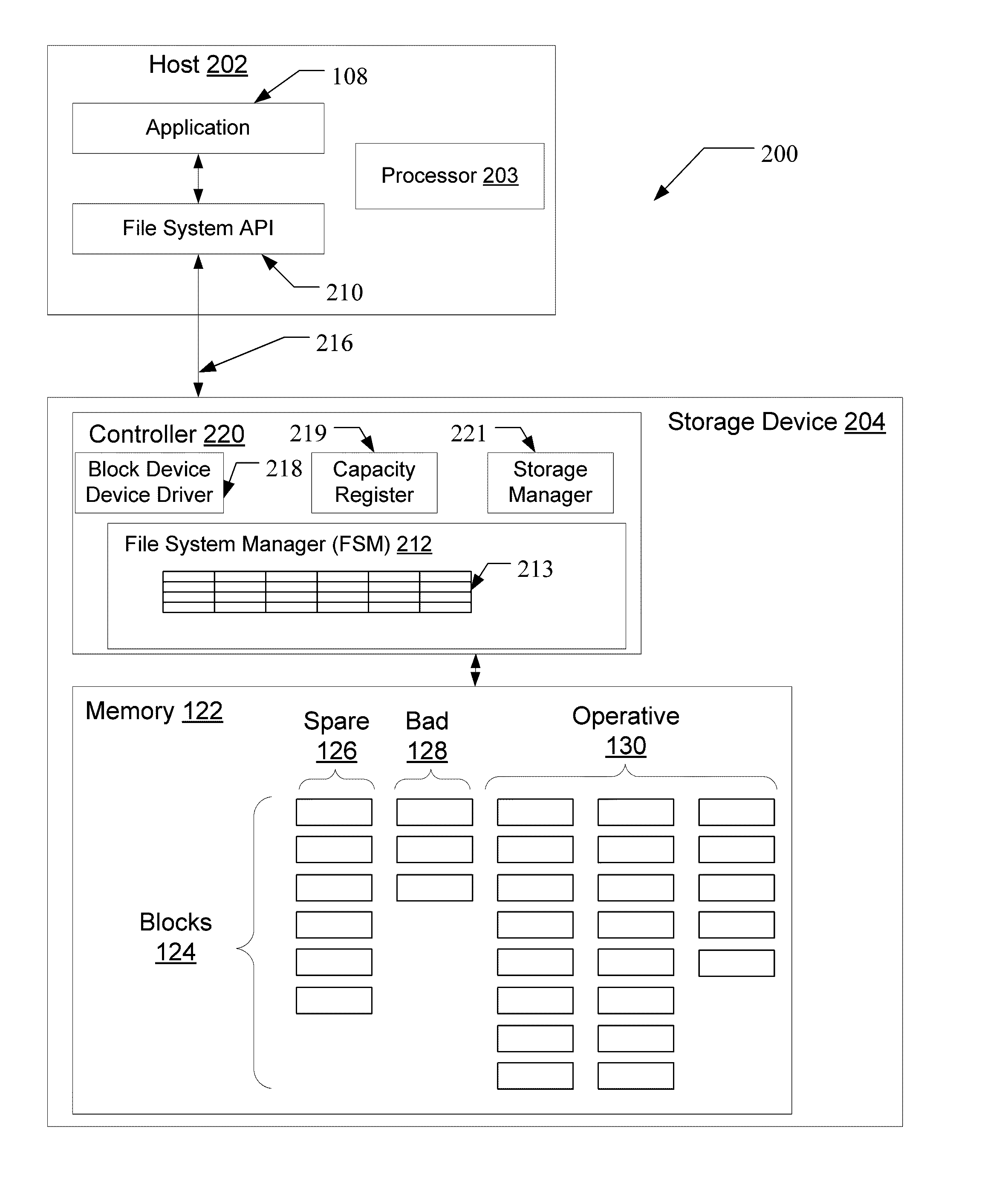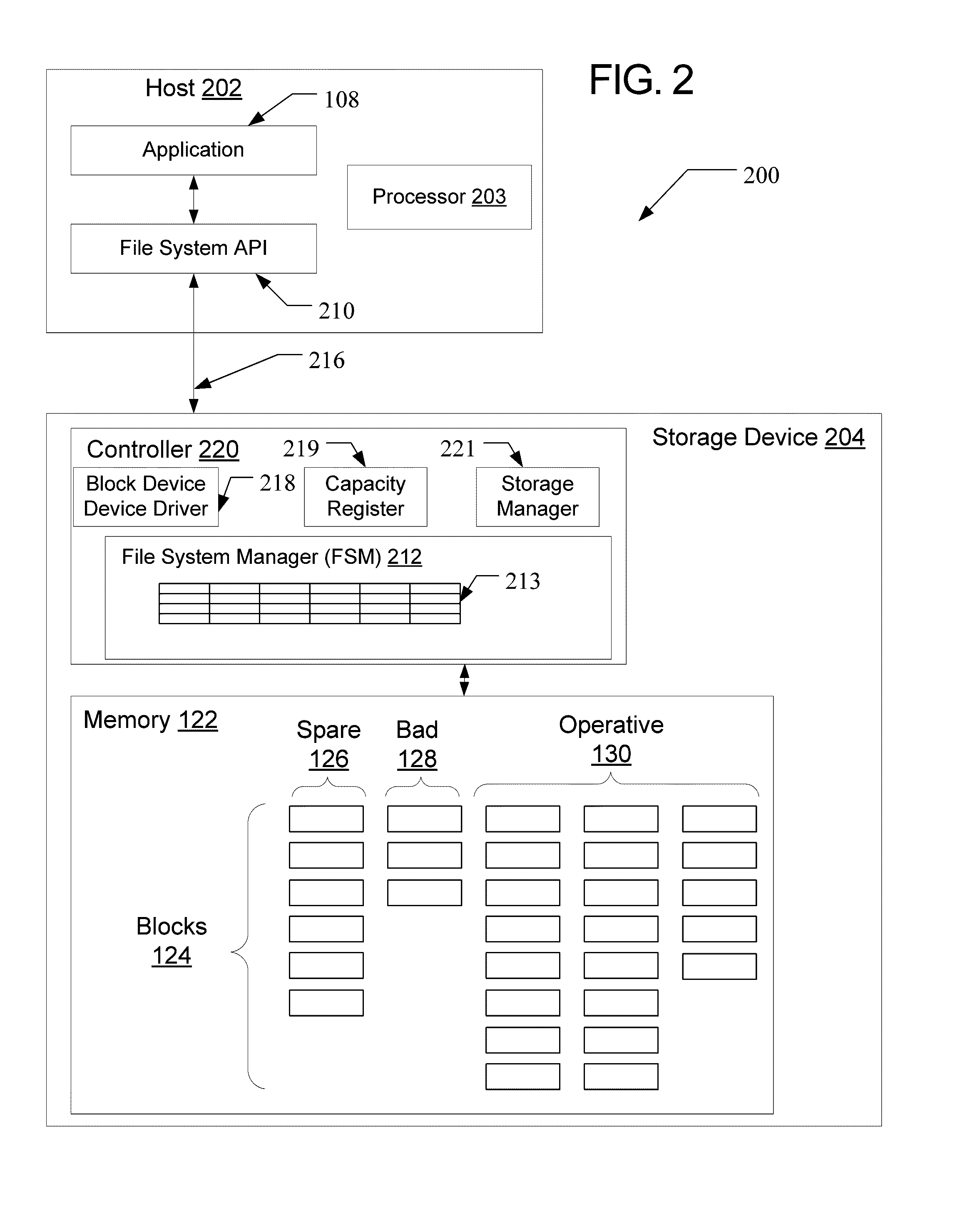Enhancement of storage life expectancy by bad block management
a technology of bad block management and life expectancy, applied in the direction of memory architecture accessing/allocation, instruments, electric digital data processing, etc., can solve the problems of data loss or parts of the storage device being unused, blocks tend to fail and become useless, and the stock of spare blocks is exhausted, so as to improve the performance or endurance of the storage device
- Summary
- Abstract
- Description
- Claims
- Application Information
AI Technical Summary
Benefits of technology
Problems solved by technology
Method used
Image
Examples
Embodiment Construction
[0020]Although not intended to be limiting in any way, the following terms may be used in this document and may take the meaning provided below.
[0021]File System Manager (FSM)—circuitry, software, or a combination of circuitry and software that manages the file system. The FSM may be located on the host of a memory system, but optionally may be in the controller inside the storage device of a memory system.
[0022]Cluster—a unit of storage space allocation that the file system manages where a cluster may include one or more sectors.
[0023]Block—a unit of storage space that a storage device can manage, read from and write to. A block has one or more pages, where a page is the minimum unit of reading or writing. A block is an internal storage unit that translates into sectors and clusters from the FSM's point of view.
[0024]Operative block—a physical block that is currently accessible to the FSM through a group of logical addresses (clusters) referred to as a logical block.
[0025]Spare blo...
PUM
 Login to View More
Login to View More Abstract
Description
Claims
Application Information
 Login to View More
Login to View More - R&D
- Intellectual Property
- Life Sciences
- Materials
- Tech Scout
- Unparalleled Data Quality
- Higher Quality Content
- 60% Fewer Hallucinations
Browse by: Latest US Patents, China's latest patents, Technical Efficacy Thesaurus, Application Domain, Technology Topic, Popular Technical Reports.
© 2025 PatSnap. All rights reserved.Legal|Privacy policy|Modern Slavery Act Transparency Statement|Sitemap|About US| Contact US: help@patsnap.com



